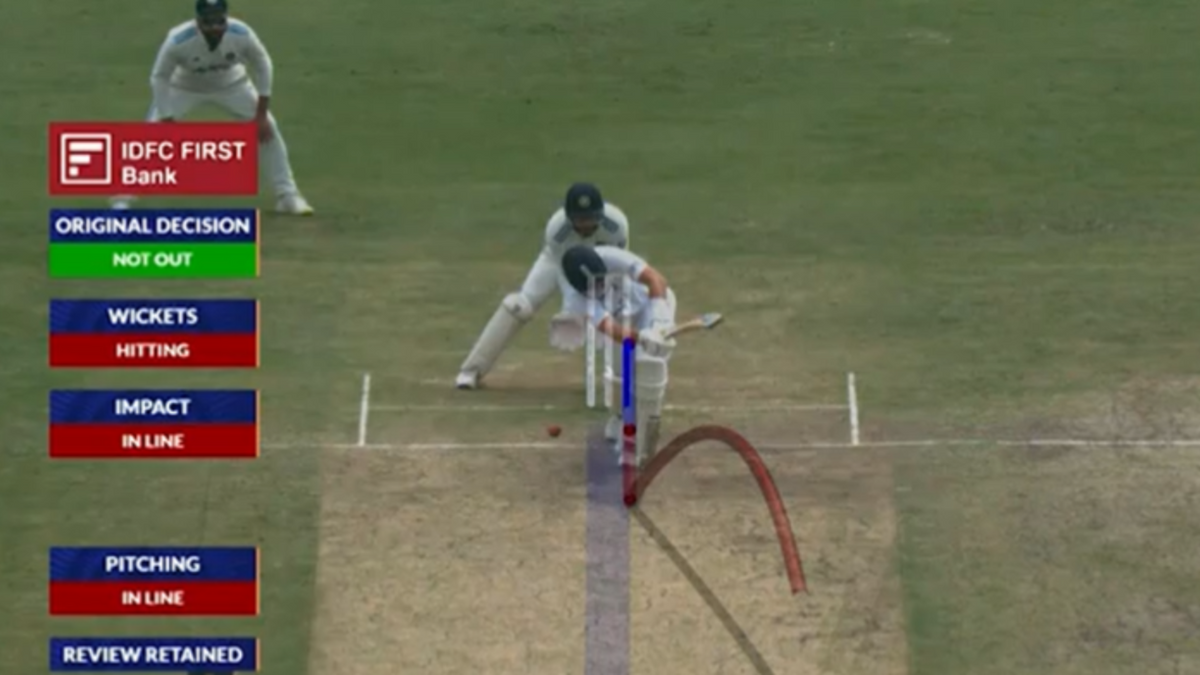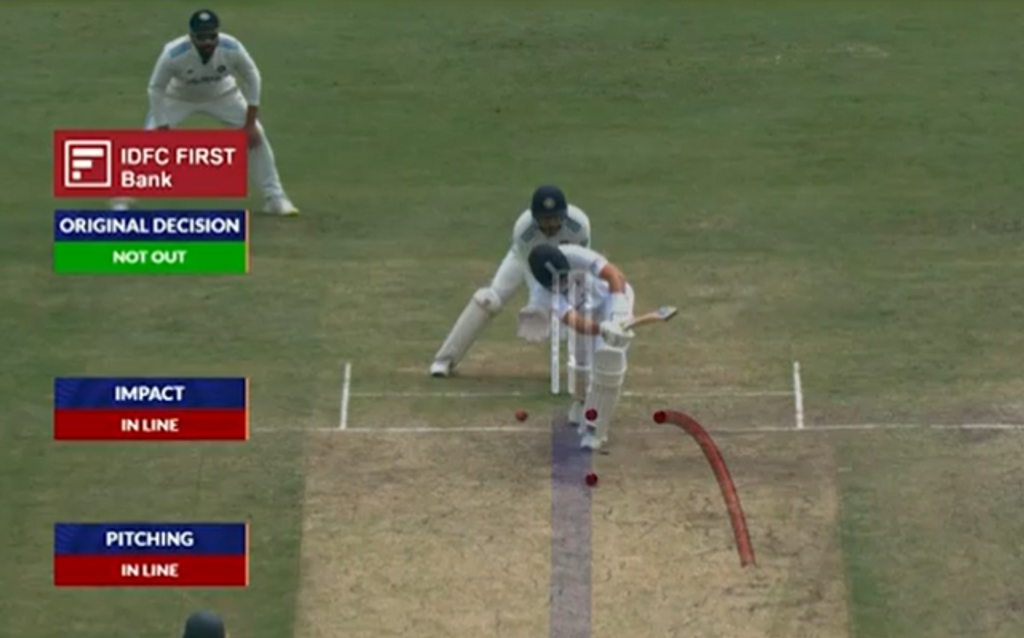
Joe Root’s marginal DRS call in the second innings of the Ranchi Test raised some questions around ball-tracking, particularly around where the ball should pitch for it to be considered in line.
Subscribe to the Wisden Cricket YouTube channel for post-match analysis, player interviews, and much more.
Root was given not out on the field after missing a full ball by R Ashwin in the second session of day three. Delivered from around the wicket, the ball appeared to have pitched close to the margins of the leg stump, before it straightened to hit Root on the pads.
India reviewed the decision. Fortunately for them, ball-tracking showed three reds and the on-field umpire’s call had to be overturned.
Michael Vaughan expressed his displeasure at ball-tracking, saying that more than half of the ball appeared to have pitched outside leg. “The Root dismissal was a shocker for the technology. Over half looked to have pitched outside leg stump but it came up red,” Vaughan told BBC Sport.
What is the Pitching Zone?
The Pitching Zone is the rectangular area on the pitch that is highlighted on TV screens whenever ball-tracking is displayed for an lbw call.
The centre of the ball, when it pitches, needs to be either within, or on the off-side of the Pitching Zone for the lbw review process to continue and check the ‘impact’ and ‘hitting’ parameters. In case the centre of the ball when it pitches, is on the leg-side of the Pitching Zone, the batter cannot be out lbw.
According to ICC’s Playing Conditions, the Pitching Zone is defined as: “A two dimensional area on the pitch between both sets of stumps with its boundaries consisting of the base of both sets of stumps and a line between the outside of the outer stumps at each end.”
“Outside of the outer stumps at each end” is the key phrase in the definition above. A general misconception is that the width of the Pitching Zone extends from the centre of the off stump to the centre of the leg stump, giving viewers the feeling that the ball must have pitched outside the line during marginal calls like Root’s.

The line of the stumps runs from the outside of the stump. The *centre* of the ball must land inside this (when issue is pitching outside leg). There is no umpire's call. It was as tight as they come. But it was out. (And we need to keep technology sweet or Terminator 2 happens) pic.twitter.com/yjUtSjA0k4
— Ali Martin (@Cricket_Ali) February 25, 2024
Does a similar zone for Impact exist?
Yes, it does. The Impact Zone is the same as the Pitching Zone, just extended above to an indefinite height to make it a three-dimensional space instead of a two-dimensional area.
For impact to be in line, the centre of the ball has to be within the Impact Zone at the point of first interception of the ball with the batter’s body. When the centre of the ball is outside the Impact Zone but some part of the ball is within, ‘umpire’s call’ comes into play, and when the entirety of the ball is outside the Impact Zone, impact is naturally considered to be outside the line.








